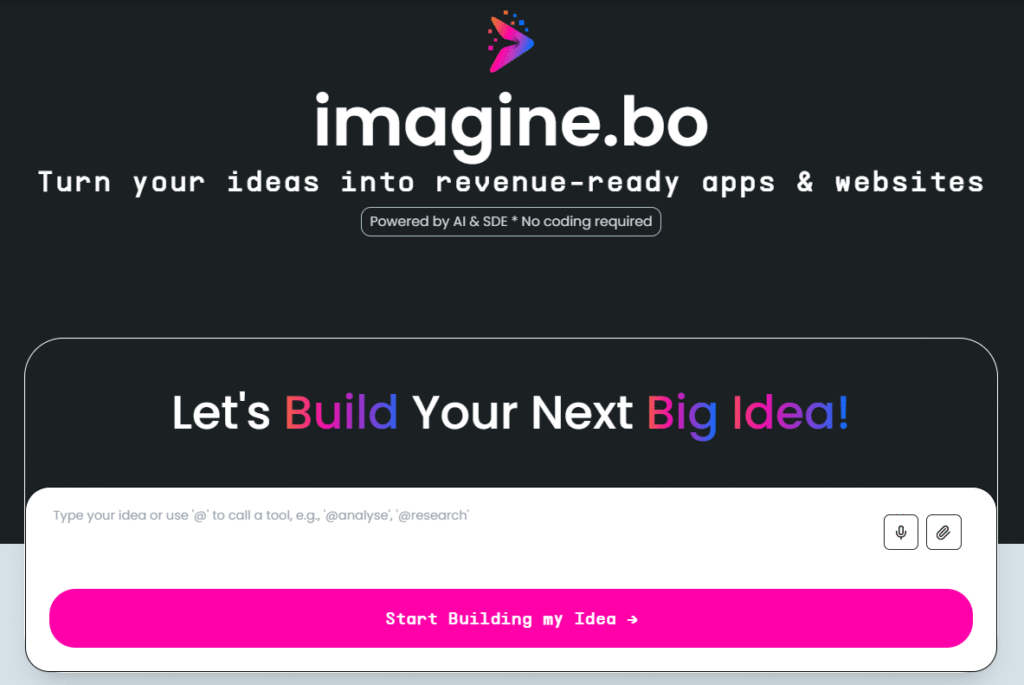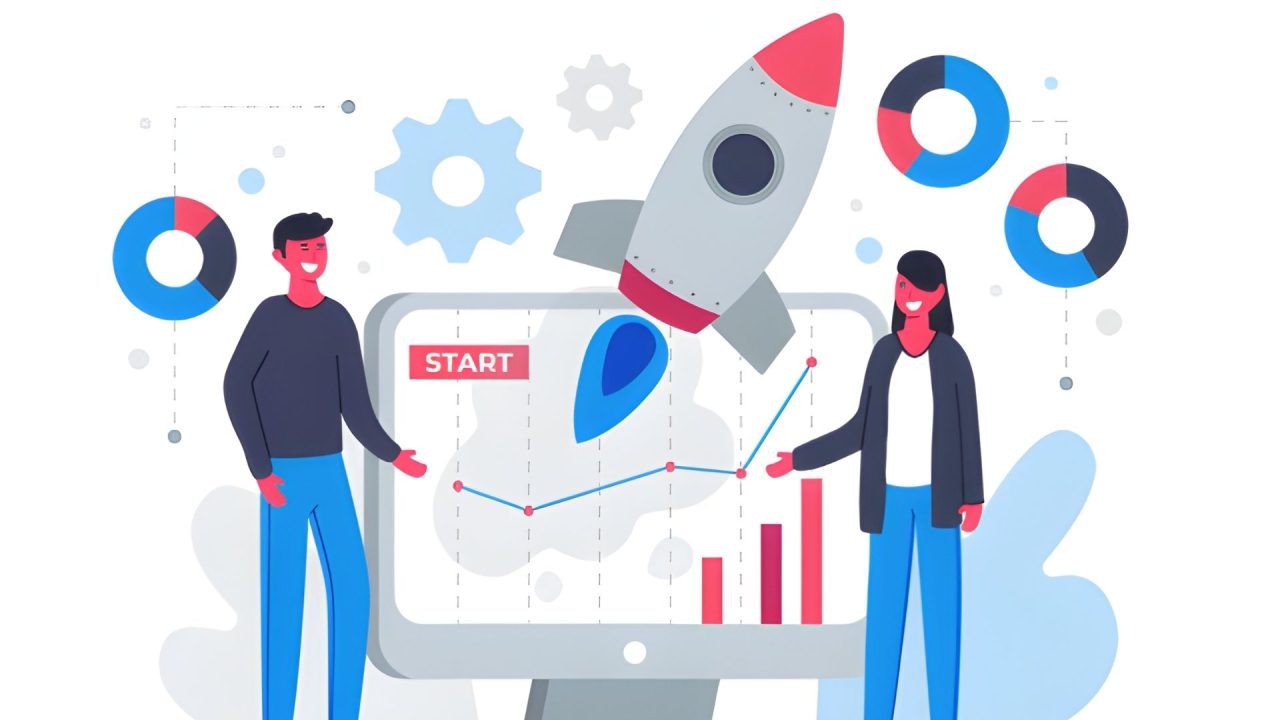Launch campaigns faster and with more precision by using prompt tools that streamline planning, creative development, and optimization. These tools help you generate targeted copy, refine messaging for different audiences, and speed up repetitive tasks that normally slow teams down. With the right prompts, you can test variations, improve consistency, and make smarter decisions, which leads to stronger performance and a more efficient workflow from start to finish.
Understanding Prompt Tools for Launch Campaigns
At their core, prompt tools are software applications or platforms that generate or refine output based on natural language user inputs. They act as a translator between human strategy and artificial intelligence execution.
Launch Your App Today
Ready to launch? Skip the tech stress. Describe, Build, Launch in three simple steps.
BuildWhat Are Prompt Tools?
Prompt tools utilize AI models capable of interpreting natural language. Whether you need a 30-day email sequence, a visual brief for a designer, or a strategic rollout plan, these tools take a simple instruction and expand it into a comprehensive output. They can often be configured with AI-generated blueprints—predefined frameworks that guide you without requiring deep technical knowledge.
The Core Benefits
- Efficiency: They automate repetitive tasks like drafting blogs, social captions, or A/B testing variants, saving hours of manual brainstorming.
- Consistency: By using the same strategic prompts across different platforms, you ensure your email voice matches your Instagram captions and your landing page copy.
- Accessibility: Most of these tools require zero coding skills, making high-level strategy accessible to every member of the marketing team, from interns to CMOs.
Planning a Campaign Workflow with AI

Effective planning is about connecting the dots between your business goal and your user’s experience. “Winging it” is no longer a viable strategy. Prompt tools excel at creating focused, AI-assisted blueprints that maintain professional quality throughout the process.
Defining Campaign Objectives
Before typing a single prompt, you must articulate what success looks like. Are you targeting a 15% increase in open rates? Do you need 500 qualified leads within three months? When you input these specific goals into a strategy assistant tool, the AI can suggest optimal timing, content themes, and segmentation tactics that directly contribute to those numbers.
Mapping User Flows
You can use prompt tools to visualize the journey a customer takes from the first ad click to the final purchase. It is critical to outline every interaction a customer will have with the campaign. By designing workflows with conversational prompts, you can detail each step and generate conditional prompts that respond dynamically to user actions. This ensures a personalized experience that increases conversion rates and reduces drop-off points.
Streamlining Asset Creation
Once the plan is in place, the heavy lifting begins: creating the assets. In a traditional workflow, this is the bottleneck—waiting on copywriters, designers, and developers. Prompt automation removes this friction, offering a distinct advantage in speed and volume.
Automated Content and Visuals
Instead of waiting weeks for a draft, prompt tools allow you to create targeted content instantly.
- Written Content: Clear prompt templates act as blueprints, instructing the AI to produce copy that aligns with your brand voice and specific call-to-action (CTA) elements.
- Visual Briefs: You can generate detailed descriptions for designers or, increasingly, use the best AI image generators to create banners and social assets in seconds. This eliminates reliance on full design teams for quick turnarounds, allowing for rapid A/B testing of visual concepts.
The Next Evolution: From “Text-to-Text” to “Text-to-App”

While most marketers are familiar with using prompts to generate text and images, the technology has leaped forward. The most significant bottleneck in a campaign launch is often not the ad copy, but the destination. If your campaign requires a custom web application, a tool for lead generation, or a Minimum Viable Product (MVP), you traditionally faced a wall of code.
You would need to hire a developer, manage a technical roadmap, and wait months. This is where the paradigm shifts with Imagine.bo.
Imagine.bo: The AI No-Code App Builder
Imagine.bo is an AI-powered platform designed to democratize software development. It allows anyone to create and launch professional-grade applications without writing a single line of code.
In the context of a launch campaign, this is revolutionary. Instead of just prompting an AI to write an email about your product, you can now use Imagine.bo to build an app by describing it in plain English.
How It Works: The 3-Step Process
Imagine.bo simplifies the complex world of software engineering into a conversational interface:
- Describe: You tell the AI your idea (e.g., “Build a referral tracking dashboard for my new shoe brand”).
- Build: The AI generates the foundational architecture, core features, and workflows automatically.
- Launch: You deploy the application to the web instantly.
This workflow drastically reduces time-to-market, allowing founders and marketers to deploy no-code MVPs in a fraction of the time it takes to hold a kickoff meeting with a traditional dev shop.
Technical Reliability without the Tech Debt

One of the biggest fears when using “no-code” or prompt-based tools for serious campaigns is reliability. If your campaign goes viral, will the site crash? Is the data secure?
Scalability on Autopilot
When you launch a campaign, traffic spikes are the goal, but they can also be the downfall of weak infrastructure. Imagine.bo handles this by integrating with industry giants like AWS, Google Cloud Platform (GCP), and Vercel.
Through DevOps one-click deployment, the platform manages hosting, security, and database setup. Imagine.bo offers a guarantee of 1,000 transactions per second. This means you can run high-volume ads or influencer campaigns with the confidence that your app will scale automatically as traffic grows, without you needing to manage servers manually.
Security and Compliance by Default
Data privacy is a major concern, especially with GDPR and SOC 2 regulations. Using a patchwork of unverified AI tools can expose you to liability.
Imagine.bo addresses this by building compliance and protection directly into the generated code. The platform handles encryption, access control, and audit logging automatically. This allows you to focus on your campaign strategy rather than worrying about infrastructure vulnerabilities, injection attacks, or data leaks.
Empowering Agencies and Enterprises
Prompt tools are not just for solo founders; they are rapidly becoming the backbone of agency workflows.
For agencies managing multiple clients, the ability to spin up custom landing pages, client portals, or promotional tools instantly is a game-changer. Using an AI website builder for agencies like Imagine.bo allows firms to scale their output without scaling their headcount.
- Multi-Client Management: Generate tailored content and apps for different audiences simultaneously.
- Consistent Branding: Use prompt templates to ensure every asset aligns with specific client brand guidelines.
- Rapid Iteration: If a client wants to pivot the campaign strategy, you can rebuild the assets in minutes, not weeks.
The Human Touch: Expert Backup
A common criticism of AI tools is that they are great until they break, leaving the user stranded. This is where Imagine.bo distinguishes itself from generic prompt tools.
While the platform is “no-code,” it recognizes that technology is complex. Imagine.bo provides real-time human assistance. If the AI automation reaches its limit, or if you need a highly specific custom feature, you can assign tasks to a professional developer within the platform. This “Expert Backup” ensures you never hit a dead end during a critical launch window.
Optimizing Performance with Data
A launch isn’t finished when you hit “publish.” The final piece of the puzzle is tracking and optimization.
Setting Up Analytics
Effective launch campaigns require precise tracking to ensure actionable insights. Modern prompt tools often integrate with analytics dashboards to consolidate data from social media, email, and paid ads.
Imagine.bo includes built-in analytics and SEO tools to monitor performance. Furthermore, advanced users can use prompt-to-dashboard building to create custom internal analytics views. This allows you to track growth, export data to Sheets, and make granular decisions based on real-time user behavior.
Conclusion
The future of campaign launches belongs to those who can work smarter, not harder. Prompt tools have evolved from simple text generators into comprehensive platforms that can handle strategy, design, and even complex software engineering.
By combining creative prompt strategies with powerful execution platforms like Imagine.bo, marketers and founders can bridge the gap between a vague concept and a fully executed, professional-grade launch. Whether you are a solo maker looking to validate an idea over a weekend, or a marketing director needing enterprise-grade scalability, utilizing prompt-based tools is the key to maximizing efficiency and impact in 2025 and beyond.
Ready to turn your prompts into products? Stop dreaming and start building with Imagine.bo today.
Launch Your App Today
Ready to launch? Skip the tech stress. Describe, Build, Launch in three simple steps.
Build




